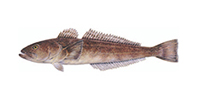Thank you for visiting the Seafood Selector. EDF is planning a new approach to providing information to consumers about good seafood choices. Please come back soon for updates.
Chilean sea bass

Chilean sea bass
Recommended servings per month
| Contaminant | Men | Women | Kids 6-12 | Kids 0-5 | |
|---|---|---|---|---|---|
| Antarctic toothfish | Mercury | 2 | 2 | 1 | 1 |
| Patagonian toothfish | Mercury | 2 | 2 | 1 | 1 |
Eco details:
- Marketed as Chilean sea bass, Patagonian and Antarctic toothfish are slow growing and inherently prone to overfishing. The premium price also spurred rampant illegal fishing, which has fortunately declined with an increasing percentage of legal operators.
- The longlines commonly used to catch Chilean sea bass can incidentally snag and drown seabirds, however the fishing industry has made major strides in reducing bycatch in recent years.
- When buying Chilean seabass look for options from Heard and McDonald, the Falklands or Macquarie as Eco-Best.
- Chilean seabass from the Ross Sea, South Georgia or Kerguelen make up more than 40% of the fishery and qualify as an Eco-OK.
- Chilean seabass from Chile, which is still plagued by management and bycatch problems, accounts for approximately 20% of U.S. imports and should be avoided.
- When possible, look for the blue eco-label of the Marine Stewardship Council (MSC) for certified sustainable Chilean seabass products.




